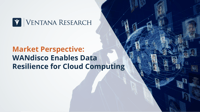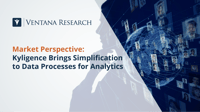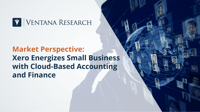Industry challenges from demand, to supply chain latency, to fulfillment have created significant impediments for retailers, vendors, suppliers and customers across the globe, without a clear end in sight. Organizations that use digital technology to access information that informs actions — or reactions — to situations that arise unexpectedly demonstrate better digital readiness. The use of cloud-based systems that provide unified access to data and analytics offer the agility to better...
Read More
Topics:
Cloud Computing,
Data,
Analytics & Data
Over the past decade, close-management software has evolved to enable even midsize organizations to streamline department processes, operate in a virtual mode, accelerate the accounting close and reduce staff stress. It’s one step toward continuous accounting, which is defined by Office of Finance Research Director Robert Kugel as an approach to managing transactions recording and accounting that takes advantage of current technology to streamline and restructure the accounting function. In...
Read More
Topics:
Office of Finance,
Business Planning,
Financial Performance Management,
ERP and Continuous Accounting,
profitability management,
digital finance
Data platforms are designed to manage and analyze big data, enabling organizations to leverage their data to operate with greater efficiency across on-premises, hybrid and multi-cloud environments. Our Analytics and Data Benchmark Research finds that while 58% are using big data in their analytics processes, less than one quarter (23%) are satisfied with their technology’s support for big data. Looking at the statistics, it is safe to say that organizations have been slow to adopt modern...
Read More
Topics:
Data Governance,
Data Integration,
Data,
data lakes,
Streaming Data,
data operations,
data platforms
Power ON is software designed for organizations to streamline their business planning, budgeting, forecasting, reviewing and reporting, in order to make these processes more effective and accurate. Organizations do a lot of planning: In addition to the budget, they plan headcount, sales, production and their supply chain, as well as other business functions, and traditionally execute this using spreadsheets as they are a familiar tool. However, spreadsheets make it difficult for individuals to...
Read More
Topics:
Office of Finance,
Business Planning,
Financial Performance Management,
ERP and Continuous Accounting,
revenue and lease accounting,
profitability management,
digital finance
A digital finance and accounting organization is one that uses software to enhance efficiency by eliminating manual operations and automating workflows, improving financial data quality. This is especially relevant to small to midsize organizations that need to minimize administrative overhead yet still have financial controls and operational visibility to achieve and sustain profitable growth. A continuous accounting approach can streamline tasks and processes, reducing time spent on...
Read More
Topics:
Office of Finance,
Analytics,
Digital Technology,
AI & Machine Learning,
digital finance
Total Compensation Management (TCM) is a strategic HCM area focused on the processes, data, analytics and technology capabilities needed to achieve an integrated and holistic approach to rewarding employees for their value and contributions. One aspect of TCM is pay equity which, simply defined, means pay comparability and fairness and a lack of bias. It is an organization’s ability to determine what jobs require comparable skill, effort and responsibility while relating that to market pay...
Read More
Topics:
Human Capital Management,
Learning Management,
Talent Management,
Workforce Management,
Total Compensation Management,
employee experience,
Continuous Payroll







